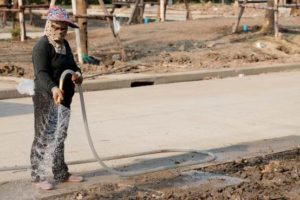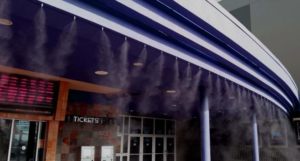Arizona’s Hidden Construction Site Hazard
OSHA lists four main hazards for construction workers. This includes falls, electrocutions, being struck by objects and being caught between objects. In Arizona, there is another hazard: breathing. Our extreme climate turns out to be extremely hospitable to the Coccidiodes fungus, the agent that causes Valley fever. Construction workers, builders and landscapers are exposed to it daily without warning.
Valley fever is a systemic infection. Victims are exposed by breathing in fungal spores, often after a period of high winds. Not everyone who is exposed develops the disease. Many report flu-like symptoms, including fever, cough, headache, muscle aches and fatigue. In other cases, Valley fever causes serious lung infections, pneumonia, and even death.

Arizonans Are at Greater Risk
The Coccidiodes fungus can be found in the soil and dust in the Southwest. This map shows the native, or “endemic” areas where Coccidiodes has been found. The highest concentration is in Arizona, which had twice as many cases of Valley fever in 2012 than any other state.
According to the CDC, almost 75 percent of Valley fever victims miss work or school. Up to 40 percent must be hospitalized, at an average cost of nearly $50,000. For large-scale contractors and builders, this presents a severe risk to their business and employees.

It is not just a matter of knowing what is in the soil. Summer dust storms bring contaminated dust from wide areas. The fungus can coat homes,
roofs, patios, and anything else that is exposed to the air.
On construction sites, dust containing Valley Fever settles on the ground, as well as on tools and equipment. Normal work activities stir up the dust, making it impossible for workers to avoid breathing it in.
Keeping Workers Safe and On the Job
Hard hats and steel-toed boots are a traditional part of the construction worker’s safety equipment. Protecting workers from an airborne danger is more difficult. Gloves can make detail work challenging. While masks and respirators are a good option in a factory setting, but not practical for the men and women whose work exposes them to the Arizona heat and sun.
There is a better way to protect the construction workforce. Pressure washing, followed by regular high pressure misting, can keep the fungus out of the air. Valley fever fungus is hardy. Cleaning must be done using high-pressure washers and specific solutions which are microbial in nature. The same care should be taken when spraying the ground under and around the worksite. Treatments should be repeated as necessary, especially after a Haboob. Construction companies wishing to implement these precautions should contact a pressure washer expert to learn what chemical solutions to use and which pressure washing equipment will perform best at their site.
Misting is often used smartly to combat the lack of humidity in Arizona, but it can also protect businesses, employees, and residential areas from Valley fever. Any outdoor area can be equipped with a misting system (purchased or rented), whether it is a large sports complex, a school, a single-family home, or a construction site.

Written by: Elizabeth Houde,
Chief Operations Officer
Pressure Systems, Inc.
Source for Center for Disease Control (CDC) stats:
http://www.cdc.gov/features/valleyfever
Source for Valley Fever stats in 2012:
http://www.cdc.gov/fungal/diseases/coccidioidomycosis/statistics.html

